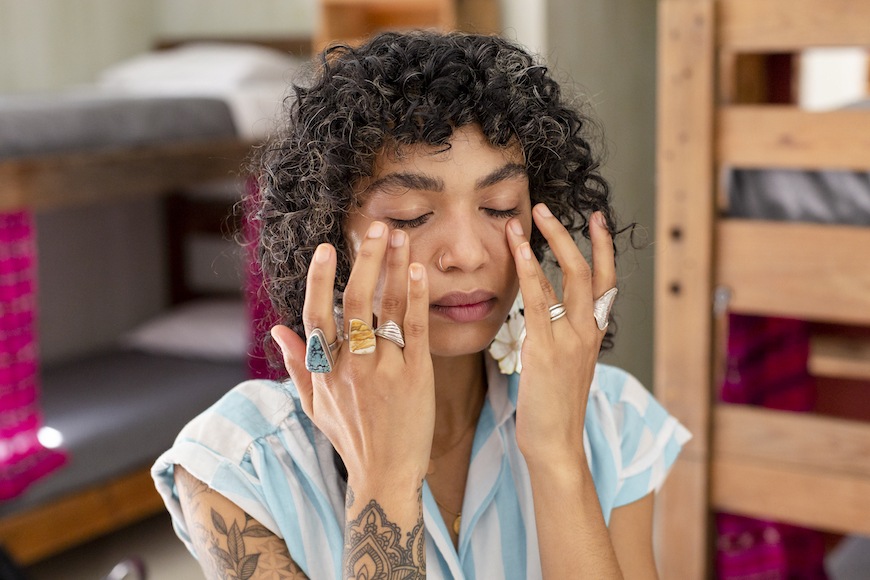How to Nourish Your Skin With Superfoods, According to Holistic Chef Sophia Roe
According to Sophia Roe—holistic chef and Cedar Lakes Estate Retreat leader—the secret is loading your skin with as much nourishment as possible, and that includes everything from the products you use topically to the food you eat.
"I think food and skin are almost in total alignment when it comes to wellness," Roe says. "Your skin is the hugest organ on your body, and so often physical manifestations of trouble in the body showcase themselves in the skin first."

Despite her totally packed schedule as a Retreat leader, Roe's skin never looked glowier because she kept her diet loaded with plants ("The food was truly unbelievable!" she says) and she used superfood-powered ELEMIS products on her face.
With a full range of plant-based products, ELEMIS feeds your skin with legit real-food ingredients like kale, quinoa, and avocado that are loaded with antioxidants, omega fatty acids, vitamins, and minerals to make your skin feel as healthy as you do after you down your go-to veggie bowl.
Scroll down to see how Sophia Roe kept her skin flawless during the Retreat—plus her tips for harnessing the powers of superfoods.

Be picky about ingredients
Her number one piece of advice when it comes to feeding your skin is to make friends with ingredients labels, both on food packaging and skin-care products. "My rule is simple: If I wouldn’t want to eat it, I will surely be apprehensive about putting it on my skin," Roe says. (Seems easy enough.)
Just like she's a fan of drinking matcha for its anti-inflammatory properties, and quinoa for its complete amino acid profile, she likes putting them on her skin to apply those same benefits directly to the source.
ELEMIS Superfood Day Cream uses matcha ("One of my favorite ingredients!" Roe says) to revitalize while moisturizing, and the Superfood Night Cream uses quinoa and a variety of grains and seeds to replenish skin overnight. "The black seed oil, chia seed oil, and sweet almond oil play a huge part in protecting the skin’s lipid barrier, which is super important," notes Roe.

Manage your stress
Her second tip for making the most of the superfoods in your diet (because organic produce ain't cheap!) is to make sure you aren't feeding them to a stressed-out body. At the Retreat, Roe taught a workshop on stress journaling to give people tangible tools to reduce their stress levels.
"It’s unbelievable how frequently we make negative food or diet choices based on stress at any given point."
"Stress journaling is a seven-day practice that entails writing down all factors of active stress in your life, and after that seven-day period, going back and identifying the major red flags and addressing them one by one," she explains. "It’s unbelievable how frequently we make negative food or diet choices based on stress at any given point."

Eat mindfully
Because your diet and the condition of your skin are so closely linked, using superfoods to tackle skin-care concerns is an all-encompassing proposition—they work best if you're feeding your skin inside and out.
Whenever you eat—whether it's something you're trying for the first time or an old go-to—start taking note of how you feel in the hours (and days) afterward, in case your body is trying to tell you something about its reaction to that food.
"Pay attention to what you eat and how you feel, the same way you pay attention to a pimple showing up on your cheeks or forehead," Roe explains. "Typically, your body has been trying to tell you in one way or another for a long time that it isn’t happy way before it ever physically manifests itself on your skin in the form of a rash, hive, etc." When your body is happy, your skin is happy, and that's, well, super.
In partnership with ELEMIS
Photos: Elena Mudd for Well+Good
Loading More Posts...